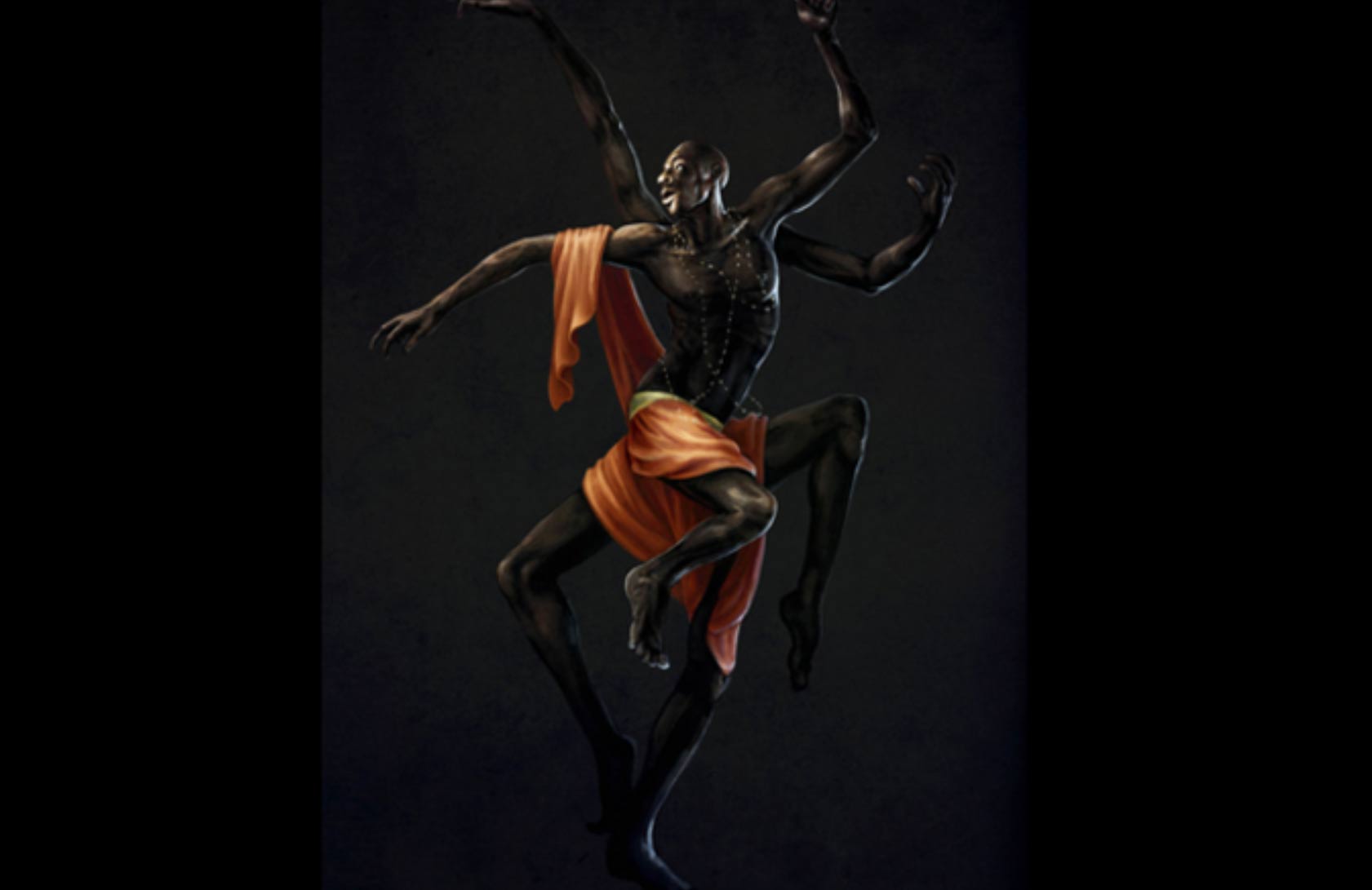The following inscriptions are my retelling of the story of Yèmọja, from the first version I heard and the history and characteristics I have received from secondary sources about the deity. This story is the first part in a series about eight Yorùbá Orishas. The other parts, Òşun,Òya, Ṣàngó, Orúnmila, Obatalá, Ogun, and Èṣù, will be published on here in due course.
1.
I was in primary school. I was nine. The classroom was hot as usual, and we were gisting during short break. “When I went to whispering palms in Badagry last holiday with my cousins, they told us the story of the mermaid whose statue is mounted in the middle of the sea at this resort”, Niyi, the unanimous and unspoken appointed storyteller of the group, started his narration of Yemoja. “Her father was a powerful sea god who loved his daughter, Yemoja, so much. When he decided she was mature enough, he gifted her the power of living in two worlds. With the gift of turning into a mermaid, Yemoja could live and rule underwater for as long as she wants while having the power to stay in her human form and still have the power of demi-gods”.
Niyi narrated with so much passion while I listened with so much fascination. “The tour guideeven told us that though no human being has seen her in a very long time now and that if someone mistakenly falls into this sea and drowns, the person’s soul belongs to Yemoja”, Niyi continued. At this point in the narration, I became scared of Yemoja. She sounded wicked, why would she take my soul if I somehow drowned? “In fact, if you repeat the words “Yeye o” three times at any place with a large body of water, just know that she would come to get you”, Niyi finished his story with this exaggerated message and that remains one of the reasons I vividly remember this story today. Whether this last part is true, I don’t know because nine-year-old me was, and now my twenty-three-year-old self is still too scared to tryit.
2.
Deeply imaginative are two words I would describe Niyi with. Researching on Yemoja now, I can see my old friend’s story was greatly embellished with his own imaginations of the deity. Yemoja which literally means Yèyé-ọmọ-ẹja (mother of fishes) is a female Yorùbá Orisha of the sea. This goddess is prominently visually represented as a dark-skinned mermaid. She is said to watch over every human being as they are considered her children. This goddess is characterized by motherhood, purity, and fertility. Yemoja’s colors are blue and white. Seven is the number attributed to her to pay respect to the seven seas she watches over. Some peer-reviewed articles say she is the daughter of another Orisha, Obatala while ome sources cite Òşun as the daughter of Yemoja, stating that the son she bore while married to Aginju raped her which led to a pregnancy. Knowing that her wicked son planned to eventually kill her, Yemoja made an attempt to escape. It was while escaping that she fell on earth. Water started spurting out of the spot she fell which gave birth to river Òşun. Others note that it was streams of water that came out of Yemoja’s body when she fell. These streams eventually united to form a lagoon which birth not just Osun but other Orishas including Òrìşà Oko, Olósà, Olókun, Ọya, and Ọbà. A number of scholars disagree with these and argue that Yemọja alongside Òşun, Ọbà, and Aasà were co-wives of Lágbònnà.
3.
With the forced migration brought about by majorly the Atlantic slave trade, Yemoja possesses many names and is worshiped in different religions and forms across various regions by afro-descendants all over the world. Yemaya, Lemanja, Olokun, Yemanja, Yemaja, Imanja, Yemaya, Jemanja, Yemalla, Yemana, Yemayah, Yemonja, and Yemowo are some of the variations Orisha Yèyé-ọmọ-ẹja goes by. One thing that is consistent however is the fact that she is a black-skinned, female, African goddess of the sea in every imagination.
Endnotes:
1. ‘Gisting’ can be loosely translated to mean the Nigerian way of saying for ‘talking about random things’.
2. ‘Short break’ is a 15 - 20minutes midday break Nigerian primary and secondary schools students have.
References
“A look at Orishas and their contributions” (n.d.). https://caribbeanlab.files.wordpress.com/2015/11/orisha.docx (accessed September 10 2020).
George, Ajíbádé. “Negotiating Performance: Òsun in the verbal and visual Metaphors”. October 2005. https://core.ac.uk/download/pdf/143364134.pdf (accessed September 8 2020).
Udo, Michael. “The Vitality of Yoruba Culture in the Americas”. Ufahamu: A Journal of African Studies, 41(2), (Winter, 2020).
“Which Orisha is Your Guide” (n.d.). http://www.amentisujai.com/wp-content/uploads/2016/08/THE-ORISHAS.docx (accessed September 10 2020).

We appreciate your contribution.
Join the Oriire Community
Become a free member to get the monthly roundup, unlock more challenges, comment on articles and bookmark your favourites





















Share
0 Comments